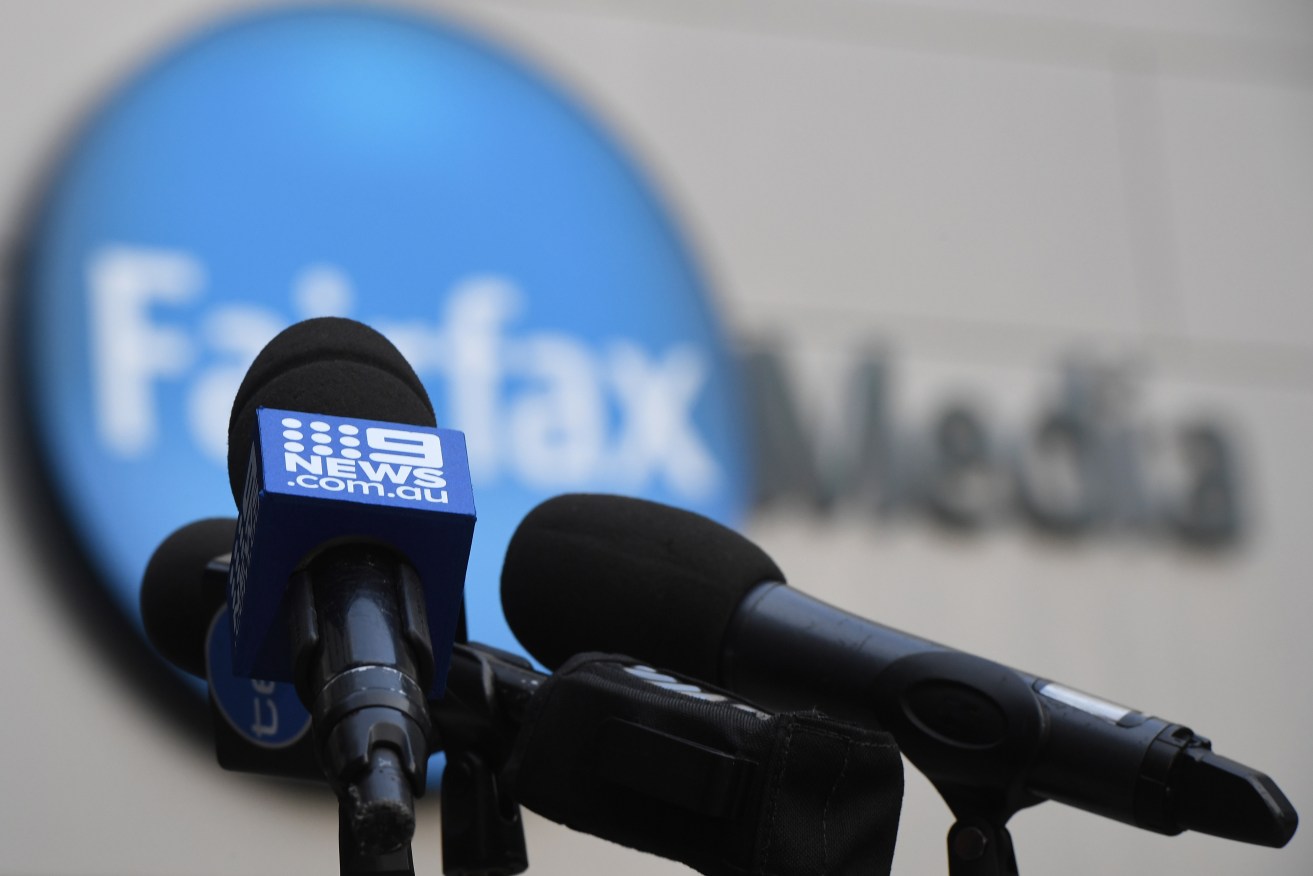Fears for Fairfax’s South Australian country newspapers
The future is uncertain for Fairfax Media’s extensive network of newspapers across regional South Australia after the company agreed to be taken over by Nine Entertainment.

Photo: AAP/Dean Lewins
Nine’s chief executive Hugh Marks has sent mixed signals about what might happen to Fairfax’s country papers when it takes over the business later this year.
Marks told investors yesterday some lower growth businesses – including regional publishing – “may be better off serviced by being part of some other environment”.
But he added that he imagined the new company will continue to invest in Fairfax’s 160 regional mastheads and websites.
Ian Osterman, president of Country Press SA, warns that the company’s more than a dozen regional titles in SA faced trouble.
“I’m quite concerned about it,” Osterman told InDaily. “On the surface of it, it doesn’t look like a healthy move.
“It’s never a good thing when the manager of a newspaper is removed from the newspaper and all the management is done in cities like Melbourne or Sydney.”
A silver lining could be the return of many of the titles to independent ownership.
“I can quite see the day coming relatively soon that the people in Sydney will say, ‘Why have we got this country media arm – I’m talking about South Australian country media – it’s not making us any money and it’s costing us to print’.
“I think it could then be a good thing in that it will allow anyone to go into the market to buy up the papers so that they become independently-owned.
“This may give an opportunity for people to come and revitalise the papers and make more of them independent, and there’s a staggering difference in terms of quality between those that are independently-owned and those that aren’t.”
Osterman, the editor of the independently-owned Courier newspaper in the Adelaide Hills, said Nine may be tempted to cut print editions of its regional newspapers.
“The digital-first model will work in the city but not in the country,” he said. “People in the country don’t have a 90-minute train journey to work in the morning to read the news on their phone.
“The digital model just doesn’t work for the country.”
Fairfax’s SA newspapers have already been the brunt of severe cuts in recent years.
In 2015, the company cut dozens of positions from SA country papers, closing the Roxby Downs Sun and reducing the number of editions elsewhere.
The Fairfax Media website lists 15 local mastheads: Barossa & Light Herald, Border Chronicle, Coastal Leader, Eyre Peninsula Tribune, Naracoorte Herald, Northern Argus, On the Coast, Port Lincoln Times, The Flinders News, The Islander, The Murray Valley Standard, The Recorder, The Transcontinental, West Coast Sentinel and Whyalla News. Fairfax also publishes The Stock Journal, based in South Australia.
Prime Minister Malcolm Turnbull was painting a positive picture of Fairfax’s stable of more than 100 regional newspapers today.
Turnbull argues the advertising revenues of regional papers have held up better than major metropolitan publications.
“Regional media, print media, is strong,” the prime minister told ABC radio today.
“Obviously the online Google and Facebook and everything else has knocked their revenues around, but they have done better in that environment than their metropolitan cousins have.”
Labor leader Bill Shorten has expressed concern about how the merger would affect Fairfax’s local papers.
“We want to ensure that Tasmanian news gets covered in Tasmanian media, that it doesn’t all come out of Victoria,” he told reporters in Devonport yesterday.
Communications Minister Mitch Fifield has argued the collapse of Australian media companies including Fairfax would guarantee the death of local content.
Fifield said standing still was not an option available to Australian media organisations competing with global online behemoths.
“You can’t wind the clock back, the internet exists, there is online competition and Australian media organisations need to adjust,” he told ABC radio on Thursday night.
“How they adjust is a matter for them. Individual media organisations are in the best position to know what is in their best business interests.
“But if Australian media organisations fail, then you will have less local content.”
The Australian Competition and Consumer Commission will examine the historic merger, which will see the Fairfax name disappear after more than a century, but the deal is expected to be approved.
The prime minister, who worked for Nine as a journalist and a lawyer, said the two companies were in a “very tough and competitive” business environment and bringing them together would bring more security.
Former prime minister Paul Keating has described the merger as an “exceptionally bad development”, arguing it will cut diversity of opinion and information.
The merger was made possible by changes to media ownership laws, passed by federal Parliament last year with the crucial support of then South Australian senator Nick Xenophon.
Xenophon, who left federal parliament for an unsuccessful new tilt at state politics, extracted a $60 million “innovation fund” for small and regional publishers in return for his support for the Government’s overall package.
He would not comment on the Nine-Fairfax merger when contacted by InDaily today.
– with AAP




